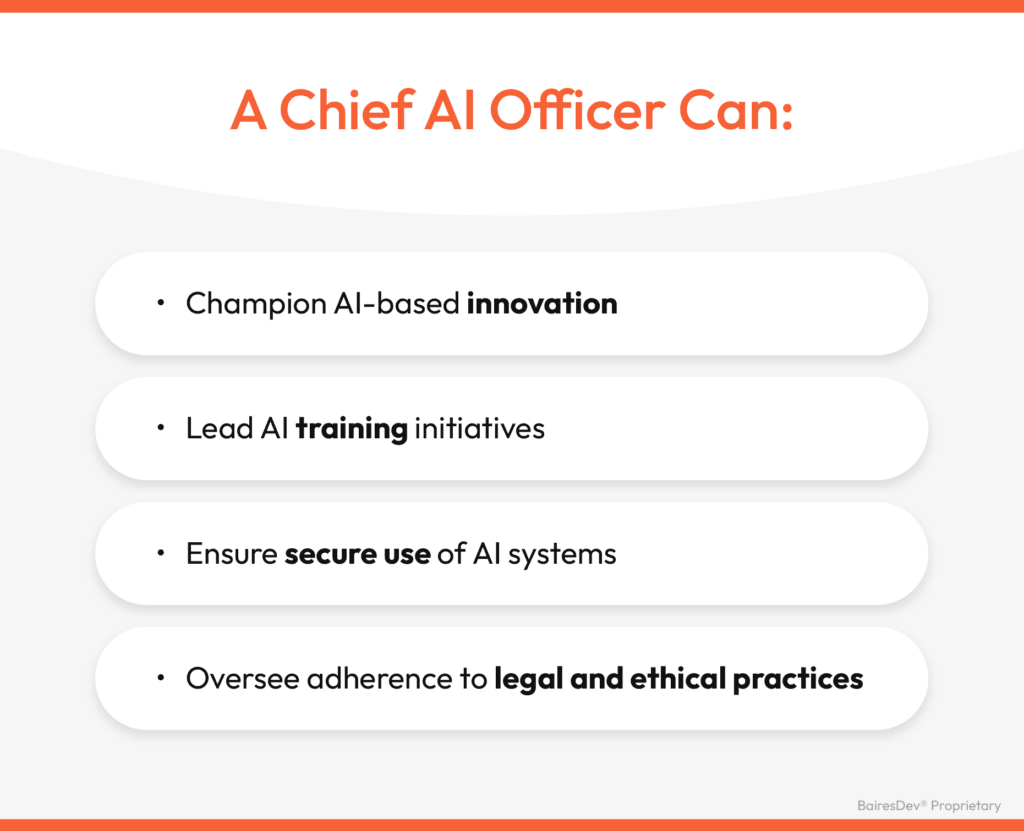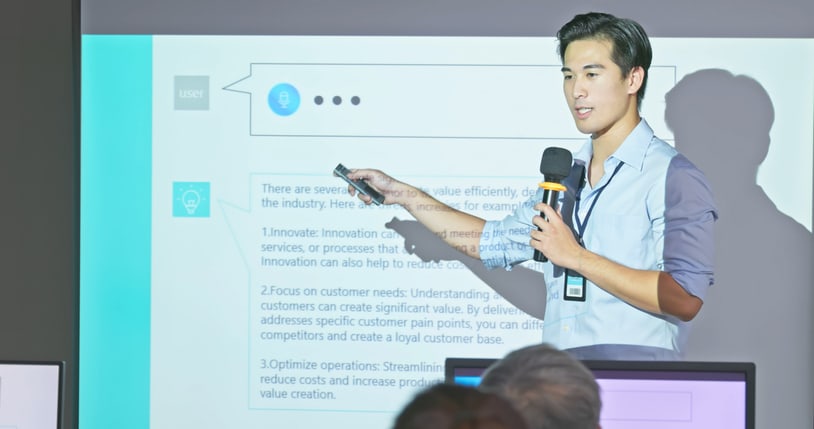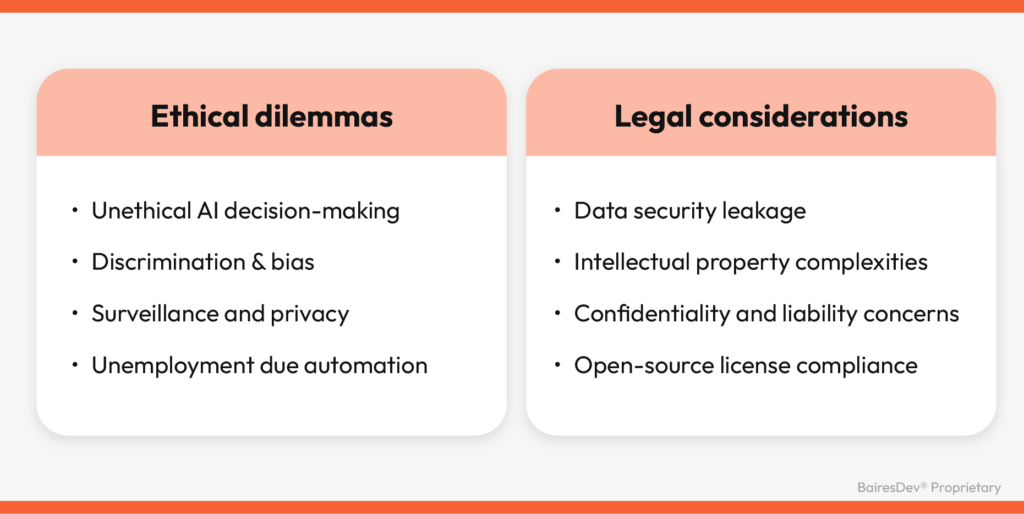As companies race to integrate AI into all their products, a chief AI officer (CAIO) can be there when things go haywire or to prevent issues in the first place. In recruitment, candidates have tricked AI resume-screening tools by stuffing keywords in invisible fonts. As a result, AI may select candidates based solely on matching keywords rather than genuine expertise.
In the same vein, indirect prompt injection is when malicious actors add hidden prompts on webpages or in emails. For example, if a person uses a virtual assistant to manage their email, an attacker might send an email with hidden prompts to trick the AI into sharing personal information or emailing contacts on the attacker’s behalf. Is Elon Musk correct when he says, “AI is far more dangerous than nukes”?
If there’s an element of truth in this, many companies will need an AI expert at the executive level to navigate the unpredictable terrain. This ensures they don’t miss the AI revolution by shying away from innovation for fear of the risks. Let’s look at what a chief AI officer can do and who it should be.

Championing AI Innovation Through Strategic Hiring
People can be resistant to adopting new tech. It took me several years to start paying with my cellphone because that sturdy credit card has served me well so far. If something isn’t broken, why fix it? AI fits this bill because the world isn’t falling apart without it; we’re functioning as normal. However, AI is demanding we develop a new perspective on work whether we like it or not.
Many of us bet it’s the next leap for humankind, but it’s not an on/off switch. Humanity is yet to figure out how to effectively wield AI, which seems at the best of times to do a half-hearted job and at worst feed users erroneous information. That’s why we need capable leaders at the forefront, encouraging correct AI adoption and recruiting a troop of AI evangelists to spread the word while also managing AI-related hires (data scientists, data engineers, prompt engineers).
A competent chief AI officer can lead the strategic hiring of AI sponsors. This team can explain AI benefits, quell skepticism, and prepare employees for more successful adoption. A chief AI officer would tackle the challenge of who to hire when there is no clear precedent. They can identify skill sets that are well suited for AI upskilling, such as critical thinking, familiarity with machine learning frameworks like TensorFlow, experience with algorithms, and proficiency in numerous programming languages. Another approach is pinpointing individuals who stimulated team growth during previous tech advances. For instance, hiring candidates who set a precedent in remote-first company policies/ best practices or senior engineers who led a company’s adoption from Waterfall to Agile methodologies.
Right now, a CAIO could support talent teams by writing AI-related job descriptions, screening candidates, interviewing for final decisions, and strategizing with those AI hires on mentoring team members across departments. Having a CAIO’s support in recruiting important AI evangelists and professionals could be a great bottom-up approach to AI adoption.

Distinguish AI Fads and AI-Washing
From the perspective of a software development company, AI isn’t new, but this last year AI has become a synonym with being up to date. Open the homepage of any SaaS company and you’ll likely see AI prominently featured. We should scrutinize these claims. It’s not possible that in 2023 every SaaS product team discovered a groundbreaking way AI could solve their niche problem, especially without compromising security protocols.
The rise of AI washing, which exaggerates a product’s AI capabilities, could be to blame for the zealous use of AI in product marketing. For instance, if a shipping company marketed a product that “uses AI” to verify outbound and inbound pallets but merely implemented automation tools without any AI-related mechanism, that would be AI washing. An AI leader can ensure that the company isn’t AI washing and isn’t paying for products or services that have been AI washed.
An AI fad could be a chatbot for a simple customer transaction, like paying a bill—a straightforward conversation that doesn’t deviate from a script. Many chatbots don’t need to be equipped with generative AI; although the responses can be creative, the outcome is confusion. It’s better to reply to a question in a standardized way than to create three different responses that say the same thing. The same applies to AI-generated content (blogs, social media posts, etc.). An AI-powered chatbot or content generator risks diluting brand identity and reputation by spewing out subpar content. If AI is just creating noise, it’s a fad and doesn’t add value to your company.
Handing over more complex processes to AI, such as data analysis, can become an expensive misstep. How can we trust that AI’s advanced statistical analysis is accurate?
Insurance companies might hesitate to replace their lead mathematicians with AI alternatives due to such doubts. For instance, insurance mathematicians have to compute the likelihood of a Category 5 hurricane impacting a town X miles from the Caribbean coast. The number they come up with informs insurance premiums. If said hurricane actually materializes, it could cost the insurance company multimillions of dollars in payouts. So the company better be sure that the AI is calculating at least as accurately as their mathematicians before swapping it in.
A chief AI officer can stay on top of trends, attend conferences, and build partnerships with academic institutions, industry bodies, or engineers behind AI technology. In this way, they can discern value from noise.
Leading Educational AI Initiatives Across the Company
I envision a chief AI officer building department-specific training programs. Each department can benefit from injecting AI into their processes. Human resources could use machine learning algorithms to identify the risk of talent attrition by analyzing salaries, performance, and job market norms. This helps retain valuable employees before they leave for another company.
For example, our Talent Acquisition department uses AI to match highly qualified candidates to client projects. For those in legal departments, AI could support contract revision. The operations teams could use AI to automate procurement processes. This must involve ample research to ensure that teams get tailored coaching rather than becoming experts on the theory of AI.
Rather than just discussing AI theory, the CAIO could set up mandatory training on basic notions of data and large language models. This could help people better understand and discover AI’s potential for applications in their day to day. At some point everyone in the company should be somewhat AI proficient. Empowering employees to explore AI applications themselves will cause a positive snowball effect on productivity.

Setting everyone up for success demands a 360-degree approach to training. Giving a chef the finest ingredients but no instructions or tools is a recipe for disaster. Handing someone the most expensive tennis racket without coaching will leave them struggling against Rafael Nadal, who could play with a racket from the 1930s. A chief of AI strategizes on professional development initiatives to get everyone on board. This ensures employees use AI to generate content tailored to their own audience, rather than using generic and poor prompts.
Implementing Ethical and Legal AI
AI is under scrutiny. The Algorithmic Accountability Act requires companies to conduct impact assessments for effectiveness, bias, etc. when using artificial intelligence to make critical decisions (such as resume screening). Businesses eyeing AI should study the small print to avoid legal litigation. It’s worth dedicating a leadership position to be accountable for AI deployment, mitigate bias, and ensure attribution. At times, a CAIO could be the only person equipped to anticipate emerging AI risks. Therefore they are key to risk mitigation in terms of ensuring a secure operation and preventing legal repercussions.
Ensuring Secure AI
A chief of AI can address security risks by developing and communicating response plans. Pluralistic ignorance can mean issues go unaddressed, where employees assume no alarms means all is well. When there’s no person to ring the alarm bell, companies can inadvertently breach privacy laws with AI.
Imagine a sales team unknowingly using an AI tool that collects customer data without proper consent. Apart from unhappy customers, there’s a liability for that data. No company wants to be in the headlines for triggering a data breach. A chief AI officer ensures tools are vetted for data privacy compliance, conducts audits, monitors for unusual activity, and steamrolls encrypted data policies. There are still plenty of loose ends in AI, and someone needs to tie them up.

What Your CAIO Should Look Like
The role of CAIO is becoming increasingly common, with Deloitte, Dell Technologies, IBM Automation, and UnitedHealth Group all opting for one. The United Nations has had Moxesh P. as chief AI officer since 2018. Moxesh advocates thinking of AI as a “wingman, a copilot, someone who can augment your life and make you a better, smarter, quicker, more decisive individual.” The United Nations with its advisory body on AI has pledged to harness AI for the greater good, and appointing a CAIO is a catalyst for this movement.
All these companies have one thing in common: They aren’t shying away from AI or underestimating it. Deloitte preaches that instilling trust in AI is a main hurdle to sustainable adoption in sectors like healthcare. UnitedHealth Group is actively developing AI/ML solutions that mitigate bias and enhance patient care. Both ambitious plans have a CAIO at the helm.
Your CAIO needs to be an individual who is passionate about AI for the greater good. They want to make a smoother, more equal world and are ready to aggressively bid on the resources and research needed to make it happen.
How To Source a CAIO From Nowhere
Sourcing a CAIO is similar to the challenge we faced in recruiting social media marketing directors (and specialists) a decade ago. Duolingo recruited Zaria Parvez in 2020 to experiment with a social-first marketing approach on TikTok. They moved from 50K followers to 5 million+ by investing in a person to hack an emerging channel. It pays to experiment. Since the chief AI officer is a new role, you’ll need to go out on a limb like Duolingo.
Creatively pursue candidates. A university might choose a tenured professor who led research on machine learning policies and built an AI-powered curriculum builder for their department. Here are a few ideas to grow and identify CAIO potential:
- Implement a reverse mentorship program where young AI professionals mentor senior executives. Senior leaders who quickly grasp AI concepts show potential.
- Introduce an intrapreneurship program where employees pitch AI project ideas and can win resources and mentorship to bring their ideas to life. Successful intrapreneurs could be groomed as CAIOs.
- Invest in AI incubators or startups. Their talent can be just the ticket to the innovation your own company needs.
- Offer fellowships or research opportunities that allow top AI researchers to split their time between academia and your company. This can lead to a seamless transition into a full-time CAIO role.
As I mentioned, AI isn’t an on/off switch. Getting the right CAIO will take some digging.
Hiring a CAIO doesn’t yet follow a clear career ladder. I’d focus on results in two branches: crisis management and prevention, and strategic planning. A CAIO needs expertise in technology, analytics, crisis management, and tech education. The candidate should also show experience implementing AI (or similar technologies) on medium-scale projects. The good news is there are many potential paths to chief AI officer and a norm has not been established.
To Hire or Not To Hire a CAIO?
A CAIO is not needed in all organizations but will offer tech companies a way to stand out and strategically ride the wave of AI. If you appoint a CAIO, they can champion innovation, distinguish fads from value, and keep AI ethical. To find your CAIO you’ll need to summon some creativity. You can groom internal talent or spread your net further afield, scooping up professionals who are leading voices in AI and tech adoption.






